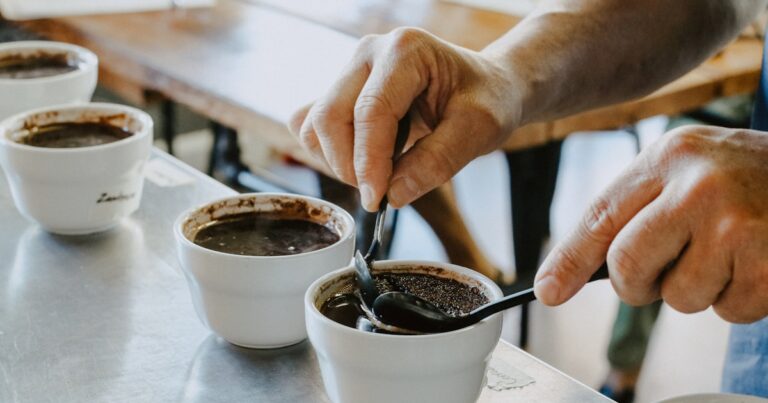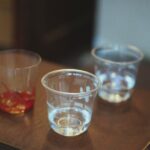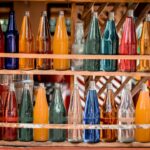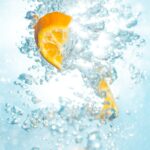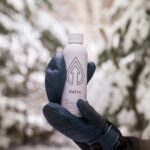Support our educational content for free when you purchase through links on our site. Learn more
What Is the Cleanest and Safest Water? 💧 Top 10 Picks (2025)
Have you ever wondered what makes water truly clean and safe to drink? Is it the sparkling bottled spring water from the Alps, the distilled water used in hospitals, or simply your local tap water filtered at home? At Water Brands™, we’ve tasted, tested, and researched the spectrum of waters—from reverse osmosis to alkaline—to uncover the truth behind the cleanest and safest options available in 2025. Spoiler alert: the answer might surprise you, especially when we reveal how environmental impact and emerging contaminants factor into your daily hydration choices.
Stick around as we break down the 10 best types of water, explain how to test your own water at home, and share expert tips on filtration and storage. Plus, we’ll debunk popular myths about alkaline and distilled water that might just change how you sip forever. Ready to drink smarter? Let’s dive in!
Key Takeaways
- Cleanest water isn’t always the purest: Reverse osmosis and distilled water offer near-total purity but lack beneficial minerals that spring and mineral waters provide.
- Tap water is often safer than you think: Regulated by the EPA, filtered tap water with a quality home filter is a cost-effective, eco-friendly choice.
- Testing is essential: Knowing your water’s unique contaminants helps you pick the right filtration system and ensures safety.
- Environmental impact matters: Bottled water has a much higher carbon footprint and plastic waste compared to filtered tap water.
- Beware of health claims: Alkaline and electrolyzed waters are safe but lack strong scientific backing for most health benefits.
👉 Shop top water filters and trusted bottled water brands:
Table of Contents
- ⚡️ Quick Tips and Facts About Clean and Safe Water
- 💧 Understanding Water Purity: What Does “Clean” Really Mean?
- 🌍 The Journey of Water Safety: History and Evolution of Clean Water Standards
- 🔬 How Is Water Tested? Key Contaminants and Safety Indicators
- 💦 10 Best Types of Water for Cleanliness and Safety: From Tap to Bottled
- 🧪 Home Water Testing Kits: How to Check Your Water’s Cleanliness Yourself
- 🚰 Water Filtration Systems: Choosing the Safest and Most Effective Options
- 🌱 Environmental Impact of Water Sources: Sustainability Meets Safety
- 💡 Expert Tips: How to Maintain and Store Clean Water Safely at Home
- 🧑⚕️ Health Benefits of Drinking Clean and Safe Water: What Science Says
- 🌐 Our Role at Water Brands™: Ensuring You Get the Cleanest and Safest Water
- 📢 Stay Updated: Latest Innovations and News in Water Safety
- 🔚 Conclusion: Making the Best Choice for Your Water Needs
- 🔗 Recommended Links for Further Reading
- ❓ FAQ: Your Top Questions About Clean and Safe Water Answered
- 📚 Reference Links and Scientific Sources
Welcome, fellow water connoisseurs! We’re the team at Water Brands™, and we spend our days (and sometimes nights, let’s be honest) tasting, testing, and talking about the world’s most essential beverage. You might think, “It’s just water, right?” Oh, you sweet summer child. The rabbit hole of water purity is deep, fascinating, and frankly, a little murky at times. We’re here to shine a light into the depths and help you answer the ultimate question: What is the cleanest and safest water to drink?
Let’s dive in, shall we?
⚡️ Quick Tips and Facts About Clean and Safe Water
- Not all bottled water is from a pristine mountain spring. A significant portion is actually filtered municipal tap water. Check the label for terms like “Purified Water” to know what you’re buying.
- “Clean” doesn’t mean zero minerals. Some of the healthiest waters are rich in minerals like calcium and magnesium, which are essential for your body.
- Your tap water is highly regulated. In the U.S., the Environmental Protection Agency (EPA) oversees tap water quality under the Safe Drinking Water Act (SDWA), often making it a very safe and affordable choice.
- The “flat” taste of distilled water is due to its lack of minerals. While it’s incredibly pure, it’s essentially just H₂O and nothing else.
- Plastic bottles can leach chemicals. Especially when exposed to heat, it’s best to store bottled water in a cool, dark place and opt for glass when possible.
- A high TDS (Total Dissolved Solids) level isn’t always bad. It can indicate high mineral content. The EPA recommends a TDS level under 500 parts per million (ppm) for palatability.
💧 Understanding Water Purity: What Does “Clean” Really Mean?
Here at Water Brands™, we get this question a lot. People often use “clean,” “pure,” and “safe” interchangeably, but they’re not the same. Let’s clear the water, so to speak.
- Safe Water: This is the baseline. Safe water is free from harmful levels of disease-causing microorganisms (like bacteria and viruses) and toxic chemicals (like lead, arsenic, and pesticides). In the United States, the Safe Drinking Water Act (SDWA) ensures that public water supplies meet strict health standards.
- Clean Water: This term is more subjective. It generally refers to water that is safe, but also aesthetically pleasing—it’s clear, colorless, and has no unpleasant odor or taste.
- Pure Water: This is water in its most basic form: just hydrogen and oxygen (H₂O). Processes like distillation and deionization create pure water by removing virtually everything else, including beneficial minerals.
The Deal with TDS
A key metric we look at is Total Dissolved Solids (TDS). This measures the combined total of all organic and inorganic substances dissolved in the water. While a high TDS level can indicate pollutants, it often just reflects a high concentration of natural minerals.
| TDS Level (ppm) | Palatability Rating | What It Means |
|---|---|---|
| 50-150 | Excellent | Considered the sweet spot for clean, fresh-tasting water. |
| 150-300 | Good | Still great quality, may have a slight mineral taste. |
| 300-500 | Fair | Safe to drink, but the mineral taste is more noticeable. This is the EPA’s recommended maximum. |
| > 500 | Poor | Not recommended for drinking due to taste and potential for high levels of certain solids. |
So, is water with a low TDS level always safer? Not necessarily. While it means fewer dissolved solids, it doesn’t guarantee the absence of specific harmful contaminants that a TDS meter can’t detect.
🌍 The Journey of Water Safety: History and Evolution of Clean Water Standards
Ever turned on your tap without a second thought? You have a long history of science and public health initiatives to thank for that! For much of human history, “clean” water was simply what looked clear. It wasn’t until the 19th century that scientists linked cholera outbreaks to contaminated water sources, revolutionizing sanitation.
The game-changer in the U.S. was the Safe Drinking Water Act (SDWA) of 1974. This landmark law empowered the EPA to set and enforce national health-based standards for drinking water. It regulates over 90 contaminants, ensuring that public water systems deliver safe water to your tap.
Today, programs like the Safe, Clean Water Program in Los Angeles County and Santa Clara County’s Safe, Clean Water and Natural Flood Protection Program continue this legacy. They focus on modern challenges like managing stormwater runoff and reducing toxins to ensure a safe, reliable water supply for millions. These initiatives show that the quest for the cleanest, safest water is an ongoing evolution.
🔬 How Is Water Tested? Key Contaminants and Safety Indicators
When we test water, we’re like detectives looking for clues. We analyze a range of indicators to build a complete picture of its quality.
Key Contaminants on Our Watchlist:
- Microbial Contaminants: Bacteria (like E. coli), viruses, and parasites. These are the classic culprits behind waterborne diseases.
- Disinfectants & Byproducts: Chlorine is used to kill microbes, but it can react with organic matter to form potentially harmful disinfection byproducts (DBPs) like Trihalomethanes (TTHMs) and Haloacetic Acids (HAA5).
- Heavy Metals: Lead and arsenic are two of the most concerning. Lead often leaches from old pipes, while arsenic can occur naturally in groundwater. The EPA’s goal for lead in drinking water is zero.
- Emerging Contaminants: This is the new frontier of water safety. We’re talking about PFAS (Per- and Polyfluoroalkyl Substances), also known as “forever chemicals,” microplastics, and even traces of pharmaceuticals. These are a growing concern, and regulations are racing to catch up.
- Radionuclides: These are radioactive elements that can be naturally present in soil and rock.
Safety & Quality Indicators:
- pH Level: A measure of acidity or alkalinity. Pure water has a neutral pH of 7.
- Turbidity: A measure of water’s cloudiness, which can indicate the presence of suspended particles.
- Hardness: Determined by the amount of dissolved calcium and magnesium. Hard water isn’t a health risk, but it can cause mineral buildup in pipes.
💦 10 Best Types of Water for Cleanliness and Safety: From Tap to Bottled
Alright, this is the main event! After countless taste tests and lab reports, we’ve ranked the top types of water. But remember, the “best” choice often depends on your local tap water quality and personal needs.
1. Reverse Osmosis Water
Reverse Osmosis (RO) is a powerhouse purification process. It forces water through a semi-permeable membrane that removes a vast majority of contaminants, including heavy metals, chlorine, and even pesky PFAS.
- Our Take: RO water is exceptionally clean and safe. Many systems include a final stage that adds back beneficial minerals, improving the taste. It’s a fantastic long-term solution for home use.
- Pros: ✅ Extremely high purity. ✅ Removes a wide range of contaminants. ✅ Great taste, especially with remineralization.
- Cons: ❌ Can be a pricey initial investment. ❌ The process wastes some water.
- Brands: Aquasana, Waterdrop
2. Distilled Water
Distillation mimics nature’s water cycle: water is boiled, the steam is captured, and it’s condensed back into a liquid, leaving nearly all impurities behind. This results in one of the purest forms of water available.
- Our Take: It’s incredibly pure, which is why it’s used in medical settings. However, its taste is often described as “flat” because it lacks minerals. As the expert in the featured video points out, the myth that distilled water leaches minerals from your body is not supported by research. It’s perfectly safe to drink, but you should get your essential minerals from a balanced diet.
- Pros: ✅ Exceptionally pure, removing >99.9% of minerals and contaminants. ✅ Great for appliances like irons to prevent mineral buildup.
- Cons: ❌ Flat, bland taste. ❌ Lacks beneficial minerals like calcium and magnesium.
- Brands: You can find generic distilled water at most grocery stores or make your own with a home distiller like those from Megahome.
3. Spring Water
This is water that comes from an underground aquifer and flows naturally to the surface. It’s bottled at the source and is prized for its purity and natural mineral content.
- Our Take: A good Natural Spring Water can be a fantastic choice. It’s naturally filtered and often has a crisp, refreshing taste. However, quality can vary by source, so we stick to reputable brands.
- Pros: ✅ Naturally filtered. ✅ Contains beneficial minerals. ✅ Often has a great taste.
- Cons: ❌ Quality is source-dependent. ❌ Can be more expensive than other options.
- Brands: Evian, Fiji Natural Artesian Water, Poland Spring
4. Purified Bottled Water
This is typically municipal water that has been processed through methods like reverse osmosis, distillation, or deionization to remove impurities.
- Our Take: It’s a reliable and safe option when you’re on the go. You’re getting water that has been treated to meet strict purity standards.
- Pros: ✅ Consistent safety and quality. ✅ Widely available.
- Cons: ❌ Environmental impact of plastic bottles. ❌ Can be more expensive than tap water.
- Brands: Aquafina (uses RO), Dasani (uses RO and adds minerals)
5. Alkaline Water
Alkaline water has a higher pH level (typically 8 or 9) than regular drinking water. Proponents claim it can neutralize acid in your body, but as the Klean Kanteen article notes, “the scientific evidence supporting these claims is limited and more research is needed.”
- Our Take: While some people swear by it, we’re waiting for more robust scientific consensus. It’s generally safe, but don’t expect it to be a magic health bullet. The higher pH is often due to minerals like calcium and magnesium, which are beneficial.
- Pros: ✅ Contains minerals. ✅ Some people prefer the smooth taste.
- Cons: ❌ Health claims are not strongly supported by science. ❌ Can be expensive.
- Brands: Essentia, Flow Alkaline Spring Water
6. Mineral Water
Like spring water, Mineral Water comes from an underground source. The key difference is that it must, by definition, contain at least 250 parts per million (ppm) of total dissolved solids (TDS). These minerals are naturally occurring.
- Our Take: We love a good mineral water! It’s a great way to hydrate while getting a dose of essential minerals like calcium and magnesium, which can support bone and muscle health. The taste can be quite distinct, which some people love.
- Pros: ✅ Rich in beneficial minerals. ✅ Can contribute to daily mineral intake. ✅ Distinctive, often pleasant taste.
- Cons: ❌ Can be high in sodium (check the label). ❌ Often comes in glass bottles, which are heavy.
- Brands: San Pellegrino, Perrier, Gerolsteiner
7. UV-Treated Water
Ultraviolet (UV) light treatment is a method of disinfection that kills bacteria, viruses, and other microorganisms by scrambling their DNA. It’s a chemical-free way to ensure microbiological safety.
- Our Take: UV treatment is highly effective against pathogens. It’s often used as a final step in a multi-stage filtration system to provide an extra layer of security, especially for well water.
- Pros: ✅ Kills 99.9% of microorganisms. ✅ Chemical-free.
- Cons: ❌ Doesn’t remove chemical contaminants, sediment, or minerals. ❌ Requires electricity to operate.
- Brands: Viqua, Acquaer
8. Filtered Tap Water
This is your standard tap water that has been run through a home filtration device, like a pitcher, faucet filter, or under-sink system.
- Our Take: For most people, this is the sweet spot for clean, safe, and affordable water. A good carbon filter can significantly improve the taste and odor of tap water by removing chlorine and can also reduce contaminants like lead and some pesticides.
- Pros: ✅ Cost-effective. ✅ Reduces plastic waste. ✅ Improves taste and removes common contaminants.
- Cons: ❌ Filter effectiveness varies by brand and type. ❌ Requires regular filter replacement.
- Brands: Brita, PUR, Berkey
9. Well Water (With Proper Testing)
About 10% of Americans get their water from private wells. This water comes directly from an underground aquifer and is not treated by a municipal system.
- Our Take: Well water can be incredibly clean and taste great, but the key phrase is “with proper testing.” Since it’s not regulated by the EPA, the homeowner is responsible for its safety. We recommend annual testing for bacteria, nitrates, and other local contaminants of concern.
- Pros: ✅ No water bill. ✅ Can be rich in natural minerals.
- Cons: ❌ Must be tested regularly to ensure safety. ❌ Susceptible to contamination from runoff or septic systems.
- Brands: Testing is key. Use a state-certified lab or a reliable mail-in kit.
10. Electrolyzed Reduced Water
This is a type of ionized water, often associated with brands like Kangen. It’s produced by a machine that uses electrolysis to separate water into alkaline and acidic streams.
- Our Take: This is another area where health claims often outpace scientific evidence. It’s a form of Enhanced Water, but like other alkaline waters, its purported benefits need more research. The machines are also very expensive.
- Pros: ✅ May contain antioxidants (though this is debated).
- Cons: ❌ Very expensive. ❌ Health claims are largely unproven.
- Brands: Enagic (Kangen Water)
🧪 Home Water Testing Kits: How to Check Your Water’s Cleanliness Yourself
Curious about what’s in your tap water? A home testing kit can be a great starting point. But be warned, their accuracy can be a mixed bag.
Types of Home Tests:
- Test Strips: These are the simplest and cheapest. You dip a strip in your water, and colored pads change to indicate the presence of certain substances.
- Accuracy: Generally low. They can give you a ballpark idea of things like pH and hardness, but they aren’t precise and can be hard to read correctly. They often don’t detect contaminants at low enough levels to be meaningful for health.
- Color Disk Kits: These involve adding reagents to a water sample and matching the resulting color to a chart. They are typically more accurate than strips for specific contaminants like chlorine.
- Digital Meters: Handheld devices that provide a digital reading, most commonly for TDS. They are great for what they do but can’t tell you what the dissolved solids are.
- Mail-in Lab Kits: This is the gold standard for home testing. You collect a sample and send it to a certified lab for professional analysis.
- Accuracy: Very high. This is the most reliable way to get a detailed and accurate picture of your water quality.
Our Recommendation: Use test strips for a quick, general check-up, but if you have genuine concerns about contaminants like lead or bacteria, invest in a mail-in lab test. It’s the only way to get true peace of mind.
👉 Shop Water Testing Kits on: Amazon | Walmart
🚰 Water Filtration Systems: Choosing the Safest and Most Effective Options
Ready to upgrade your tap water? Choosing a filtration system can feel overwhelming, but we’ve broken it down for you.
| Filtration System Type | Best For | How It Works | Top Brands |
|---|---|---|---|
| Pitcher Filters | Individuals, renters, improving taste | Gravity pulls water through a carbon filter. | Brita, PUR, ZeroWater |
| Faucet-Mounted Filters | Convenience, cooking | Diverts tap water through a small filter unit. | PUR, Brita |
| Under-Sink Filters | High performance, aesthetics | Installs under the sink for a dedicated filtered water tap. Often multi-stage. | Aquasana, Frizzlife |
| Whole-House Filters | Comprehensive protection | A large system installed where the main water line enters your home, filtering all water. | Express Water, iSpring |
| Reverse Osmosis (RO) | Maximum purity | A multi-stage system (usually under-sink) that uses a membrane to remove nearly all contaminants. | APEC Water Systems, Waterdrop |
Our Pro Tip: Before you buy, get a copy of your local water quality report (often called a Consumer Confidence Report) from your utility provider. This will tell you which contaminants are present in your water, so you can choose a filter certified to remove them.
🌱 Environmental Impact of Water Sources: Sustainability Meets Safety
We can’t talk about the “best” water without considering Mother Earth. The convenience of Bottled Water comes at a steep environmental price.
Here’s a sobering fact: The energy used to produce and transport bottled water is up to 2,000 times greater than that for tap water. And the plastic waste? Billions of bottles end up in landfills and oceans each year, where they break down into harmful microplastics. Choosing filtered tap water over bottled water can reduce your carbon footprint by over 98% for the same amount of hydration.
The Bottom Line:
- Bottled Water: High carbon footprint, significant plastic pollution, and resource depletion.
- Filtered Tap Water: Dramatically lower environmental impact, reduces waste, and is more cost-effective.
Our recommendation is clear: invest in a good reusable water bottle and a home filtration system. It’s the single best thing you can do for both your health and the planet.
👉 Shop Reusable Water Bottles on: Amazon | Klean Kanteen Official Website
💡 Expert Tips: How to Maintain and Store Clean Water Safely at Home
So you’ve got your clean water. Now what? Proper storage is crucial to keep it safe, especially for emergency preparedness.
- Choose the Right Containers: Use FDA-approved, food-grade storage containers. Clean 2-liter soda bottles work in a pinch, but avoid milk jugs, as they can harbor bacteria and are hard to clean. Glass is great but breakable.
- Clean and Sanitize: Before filling, wash containers with soap and water, then sanitize with a solution of 1 teaspoon of unscented household bleach per quart of water. Shake well, let it sit for at least 30 seconds, then rinse.
- Store Smart: Keep your water in a cool, dark, and dry place. Sunlight can promote algae growth, and heat can cause chemicals to leach from plastic. Keep containers away from toxic substances like gasoline or pesticides, as vapors can penetrate plastic.
- Rotate Your Supply: For water you’ve stored from the tap, it’s best to replace it every six months. Label your containers with the date so you don’t forget!
🧑⚕️ Health Benefits of Drinking Clean and Safe Water: What Science Says
Staying hydrated is fundamental to health. Every system in your body depends on water. Drinking clean, safe water helps:
- Regulate Body Temperature: Water helps you stay cool through sweat.
- Lubricate Joints: It’s a key component of the fluid that cushions your joints.
- Deliver Nutrients: Water carries oxygen and nutrients to your cells.
- Flush Out Waste: Your kidneys rely on water to filter waste from your blood and excrete it in urine.
- Improve Brain Function: Even mild dehydration can impair energy levels, mood, and the ability to concentrate.
While some waters, like mineral water, provide an extra boost of nutrients like calcium and magnesium, the primary benefit of any clean water is proper hydration. So drink up!
🌐 Our Role at Water Brands™: Ensuring You Get the Cleanest and Safest Water
At Water Brands™, our mission is simple: to cut through the noise and provide you with clear, honest, and expert-backed information about drinking water. We rigorously test products, analyze water quality reports, and stay on top of the latest scientific research. We believe that everyone deserves access to clean and safe water, and we’re here to empower you to make the best choices for your health and lifestyle.
📢 Stay Updated: Latest Innovations and News in Water Safety
The world of water is always flowing and changing. One of the biggest topics right now is the prevalence of emerging contaminants. These are substances like PFAS, microplastics, and pharmaceuticals that aren’t yet broadly regulated but are being detected in water sources.
The good news is that technology is advancing rapidly. Innovations in filtration, like advanced RO membranes and new adsorbent materials, are being developed to target these specific threats. Public awareness is also driving change, with consumers demanding more transparency from utilities and manufacturers. We’re keeping a close eye on these developments and will always bring you the most current information to keep your water safe.
🔚 Conclusion: Making the Best Choice for Your Water Needs
After our deep dive into the world of clean and safe water, it’s clear that there’s no one-size-fits-all answer—but there are some clear winners depending on your priorities.
If you want maximum purity and safety, Reverse Osmosis systems and distilled water top the charts. They remove nearly all contaminants, including heavy metals and emerging pollutants. However, distilled water’s lack of minerals makes it taste flat, and RO systems require an upfront investment and some water waste.
For those craving natural minerals and great taste, natural spring water and mineral water are fantastic choices. Just be sure to pick reputable brands like Evian or San Pellegrino to avoid inconsistent quality.
If you’re looking for affordable, convenient, and environmentally friendly options, filtered tap water is the sweet spot. A good-quality carbon filter pitcher or faucet filter can dramatically improve taste and safety, reducing plastic waste and your carbon footprint.
We also want to close the loop on the question of alkaline and electrolyzed water. While these waters have enthusiastic fans, the current scientific evidence is limited. They’re safe to drink but don’t expect miraculous health benefits.
Our confident recommendation: Start by testing your tap water. If it’s safe but tastes off, invest in a quality filtration system like a Brita pitcher or an under-sink Aquasana RO system. If you want bottled water, choose trusted spring or mineral water brands, but keep sustainability in mind.
Remember, hydration is key, and clean, safe water is the foundation. Now that you’re armed with knowledge, go forth and sip smartly! 💧✨
🔗 Recommended Links for Further Reading & Shopping
👉 Shop Top Water Filtration & Bottled Water Brands:
- Aquasana Reverse Osmosis Systems: Amazon | Aquasana Official Website
- Waterdrop RO Systems: Amazon | Waterdrop Official Website
- Brita Water Filters: Amazon | Brita Official Website
- PUR Water Filters: Amazon | PUR Official Website
- Evian Natural Spring Water: Amazon
- Fiji Natural Artesian Water: Amazon
- San Pellegrino Mineral Water: Amazon
- Essentia Alkaline Water: Amazon
- Megahome Water Distiller: Amazon
Books to Deepen Your Water Knowledge:
- The Big Thirst: The Secret Life and Turbulent Future of Water by Charles Fishman — Amazon
- Water: The Epic Struggle for Wealth, Power, and Civilization by Steven Solomon — Amazon
- Your Water Footprint: The Shocking Facts About How Much Water We Use to Make Everyday Products by Stephen Leahy — Amazon
❓ FAQ: Your Top Questions About Clean and Safe Water Answered
How can I ensure my tap water is safe to drink?
Ensuring your tap water is safe starts with knowing your local water quality. Most municipal water suppliers publish an annual Consumer Confidence Report (CCR), detailing contaminant levels and compliance with EPA standards. You can usually find this on your water utility’s website or request a copy.
If you have concerns about specific contaminants (like lead from old pipes), consider testing your water using a certified lab or a reliable home test kit. Installing a certified water filter designed to remove those contaminants is the next step.
Tip: Replace filters regularly and maintain your plumbing to avoid contamination.
What are the best methods for purifying drinking water at home?
The best method depends on your water source and contaminants of concern:
- Reverse Osmosis (RO): Removes a broad spectrum of contaminants, including heavy metals, fluoride, and PFAS.
- Distillation: Produces very pure water by boiling and condensing steam.
- Activated Carbon Filters: Excellent for removing chlorine, pesticides, and improving taste.
- UV Treatment: Effective at killing bacteria and viruses but doesn’t remove chemicals.
- Combination Systems: Many home systems combine these methods for comprehensive purification.
Always choose filters certified by organizations like NSF International or WQA for proven performance.
Is bottled water truly safer than tap water?
In most developed countries, tap water is as safe or safer than bottled water. Bottled water is regulated by the FDA, but the standards are often less stringent than the EPA’s for tap water. Plus, bottled water can sometimes just be filtered tap water.
The environmental impact of bottled water is significant, so unless you have a specific reason (like traveling to an area with unsafe tap water), filtered tap water is usually the better choice.
What are the common contaminants found in drinking water?
Common contaminants include:
- Microbial pathogens: Bacteria (E. coli), viruses, parasites.
- Disinfection byproducts: Formed when chlorine reacts with organic matter.
- Heavy metals: Lead, arsenic, mercury.
- Nitrates: From fertilizers and septic systems.
- Emerging contaminants: PFAS, pharmaceuticals, microplastics.
- Sediment and turbidity: Dirt, rust, and other particles.
Regular testing and appropriate filtration can manage these risks effectively.
How often should I test my private well water?
Private wells are not regulated by the EPA, so homeowners must take responsibility. We recommend testing at least once a year for bacteria, nitrates, and local contaminants of concern. After heavy rains or flooding, test again, as contamination risk increases.
Can drinking distilled or RO water cause mineral deficiencies?
No. While distilled and RO water lack minerals, the minerals you need come primarily from your diet, not water. Drinking these waters is safe and won’t cause deficiencies if you maintain a balanced diet.
📚 Reference Links and Scientific Sources
- EPA Safe Drinking Water Act (SDWA): https://www.epa.gov/sdwa
- Consumer Confidence Reports (Example): https://www.epa.gov/ccr
- NSF International Water Treatment Certifications: https://www.nsf.org/services/by-industry/water-treatment
- Safe, Clean Water Program (LA County): https://safecleanwaterla.org/
- Santa Clara Valley Water District Safe, Clean Water Program: https://www.valleywater.org/safe-clean-water-and-natural-flood-protection-program
- Klean Kanteen Blog on Healthiest Types of Water: https://www.kleankanteen.com/blogs/blog/7-healthiest-types-of-water-to-drink
- Aquasana Official Website: https://www.aquasana.com/
- Brita Official Website: https://www.brita.com/
- PUR Official Website: https://www.pur.com/
- Enagic (Kangen Water) Official Website: https://www.enagic.com/
We hope this comprehensive guide has quenched your thirst for knowledge about clean and safe water. Remember, the best water is the one you drink consistently—and now you know how to make that water the cleanest and safest possible. Cheers to your health! 🥂💧



